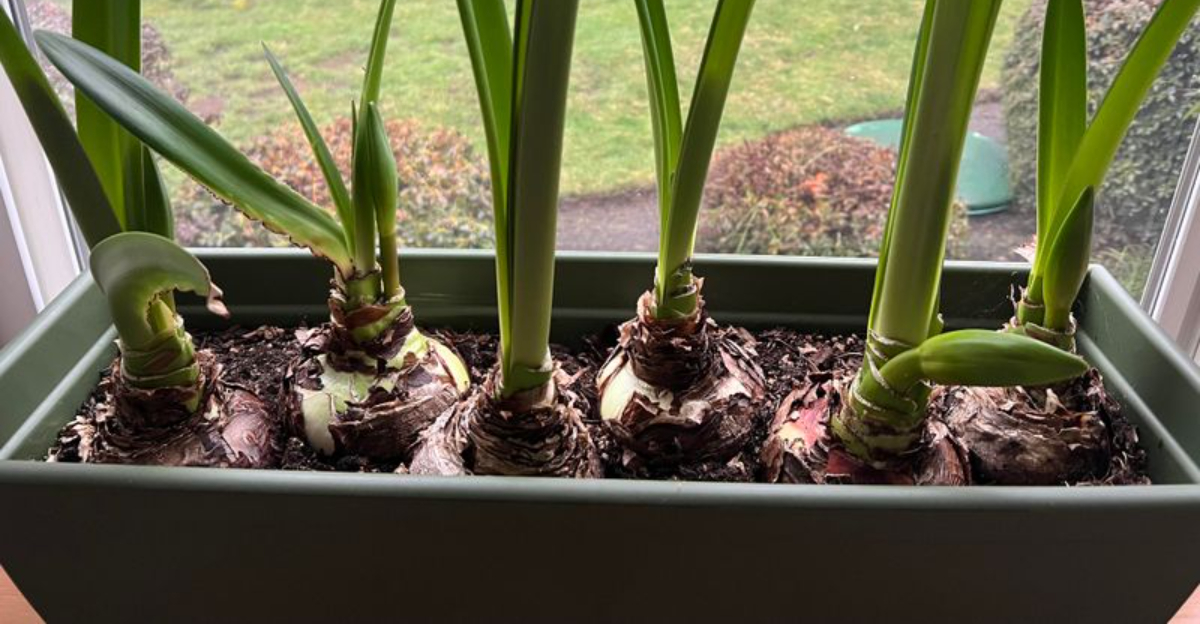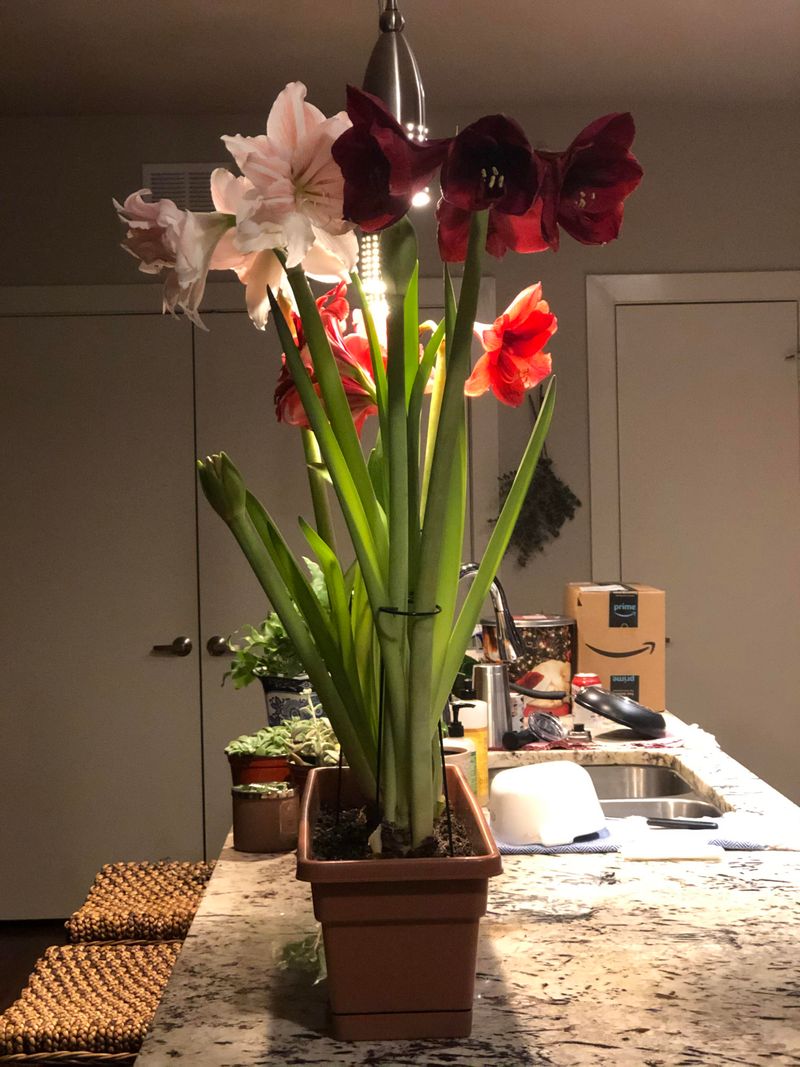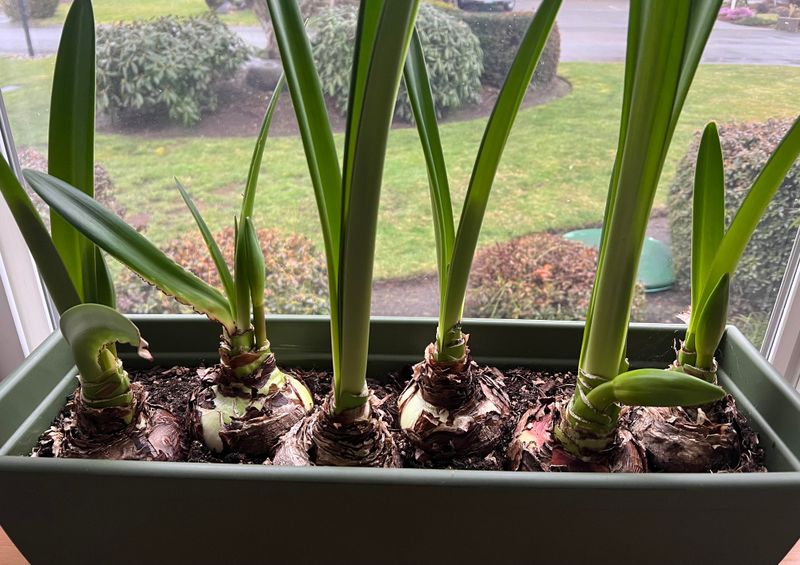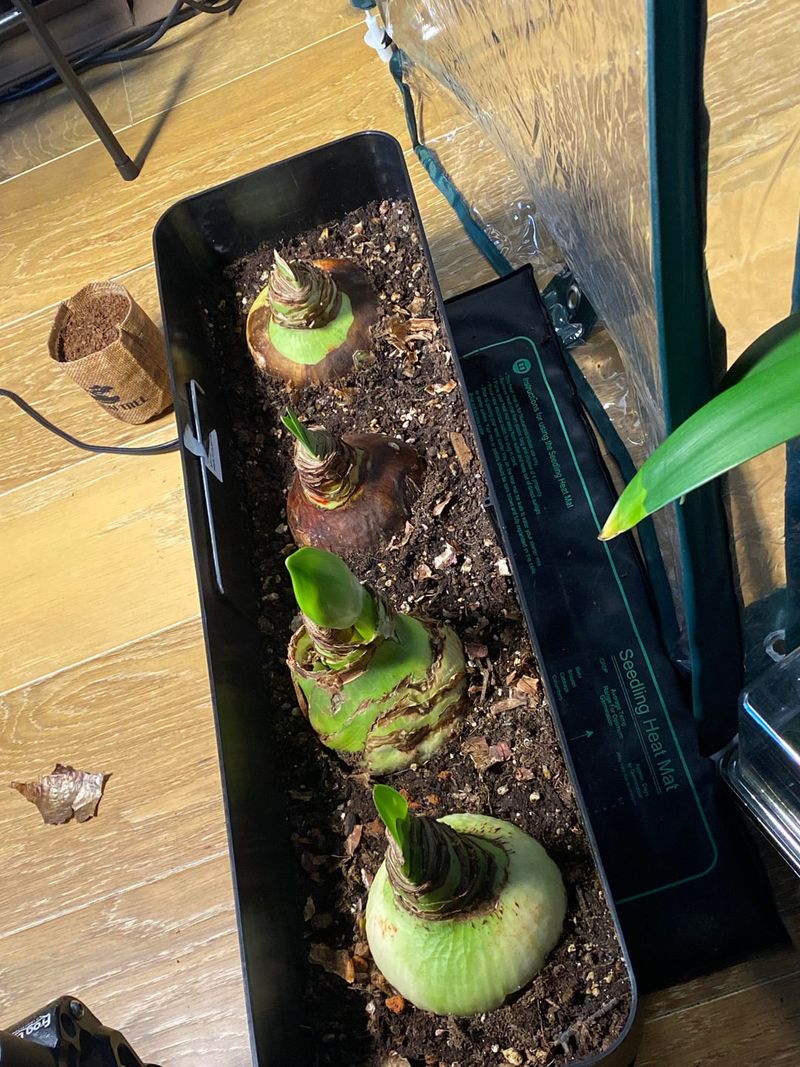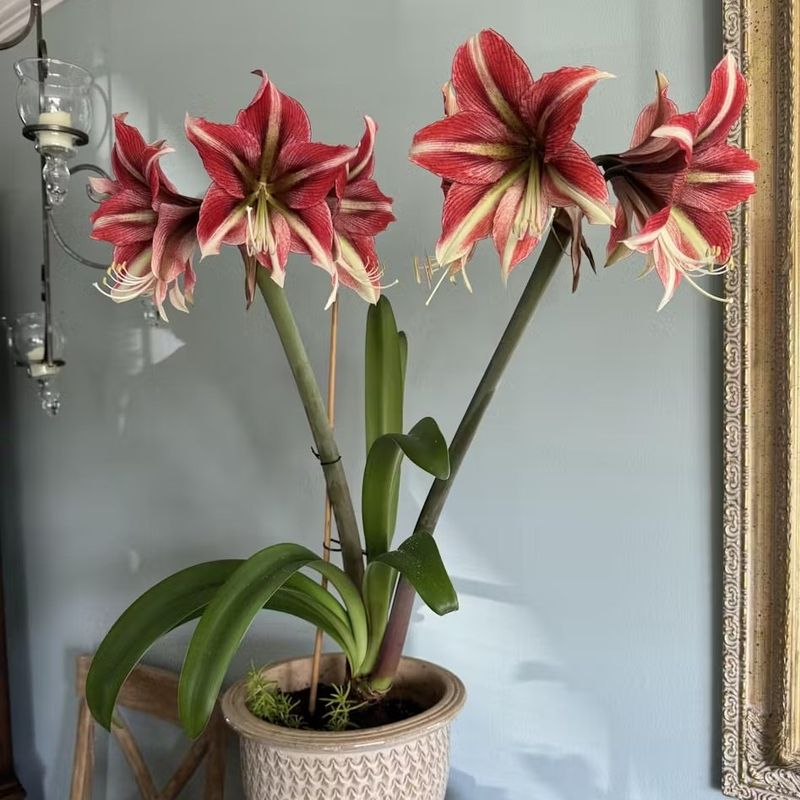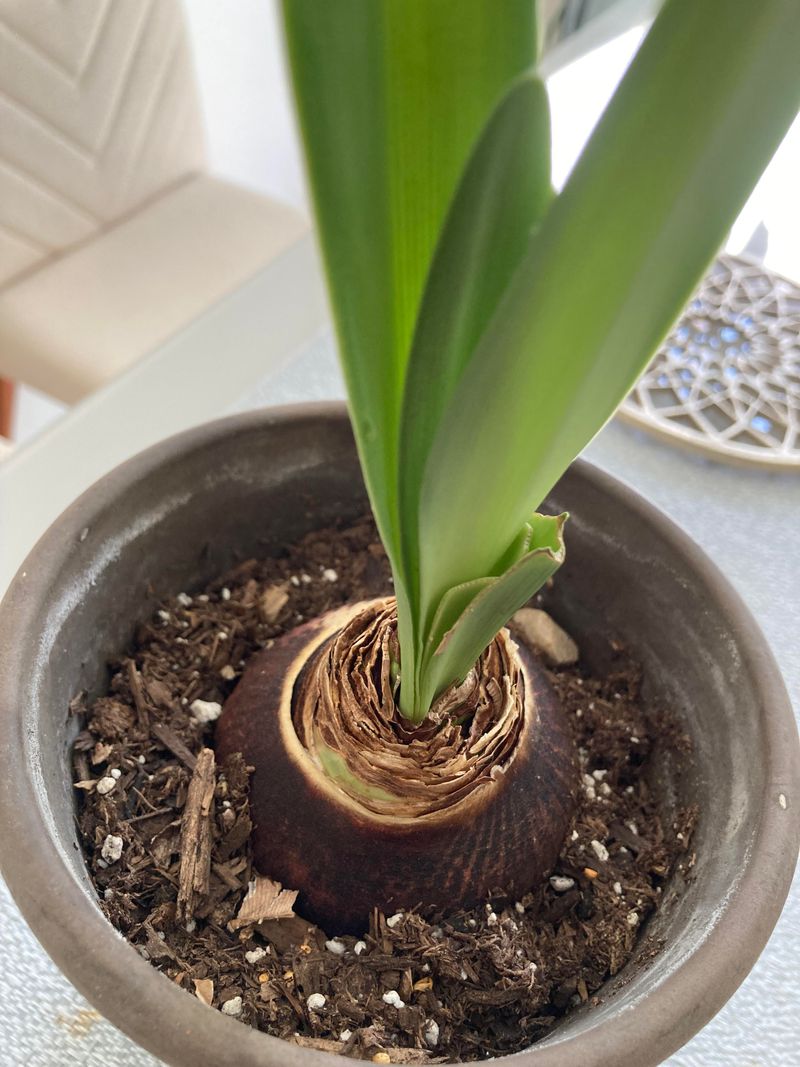December in Minnesota brings short days, crisp air, and a craving for color indoors. Amaryllis bulbs promise a burst of drama just in time for the holidays, yet one slip-up can turn that promise into a flop.
A missed step, a heavy hand, or a poor spot can spell trouble fast. Homeowners who sidestep common pitfalls enjoy blooms that stop guests in their tracks—and a plant that earns its place in the winter spotlight.
1. Choosing A Pot That’s Way Too Big
Bulbs actually prefer feeling a bit snug in their containers. When you plant amaryllis in oversized pots, the extra soil holds too much moisture around the roots, which can cause rotting problems.
Pick a container that leaves only about two inches of space around the bulb’s sides. Drainage holes at the bottom are absolutely necessary to prevent water from pooling underneath.
Clay or ceramic pots work wonderfully because they allow air circulation through the material.
2. Burying The Bulb Completely Underground
Unlike most other bulbs you plant outside, amaryllis needs part of itself exposed above the soil line. Covering it entirely creates conditions where fungal diseases and rot can develop quickly.
About one-third to one-half of the bulb should stick up above the potting mix. Position it with the pointed end facing upward, where the flower stalk will eventually emerge.
Gently press soil around the sides without packing it down too firmly around the base.
3. Watering Too Generously Right After Planting
Many Minnesota gardeners make the mistake of soaking their newly planted amaryllis immediately. Excessive water before roots establish themselves encourages bulb rot instead of healthy growth.
Give just enough water to lightly moisten the soil at planting time, then wait. Hold off on additional watering until you see green growth emerging from the top or roots developing.
Once shoots appear, gradually increase watering frequency while ensuring the pot drains completely each time.
4. Placing The Pot In A Cold, Dark Corner
Amaryllis craves warmth and brightness to trigger its spectacular blooming process. Minnesota homes often have chilly spots near windows or in basements where temperatures drop too low for proper growth.
Find a warm location where temperatures stay between 68-75 degrees Fahrenheit consistently. Bright, indirect sunlight from a south or east-facing window provides ideal lighting conditions.
Avoid placing pots directly on cold windowsills where drafts can chill the bulb during frigid December nights.
5. Forgetting To Rotate The Container Regularly
Flower stalks naturally bend and lean toward whatever light source they detect. Without regular turning, your amaryllis will develop a lopsided appearance with stems curving awkwardly toward the window.
Every few days, give the pot a quarter turn to encourage straight, upright growth. Mark one side with tape or a sticker to help remember which direction you’ve already rotated.
Consistent rotation results in balanced, beautiful blooms that stand tall and proud in the center of the pot.
6. Expecting Instant Blooms Within Days
Patience becomes essential when growing amaryllis because bulbs operate on their own timeline. Getting discouraged after just a week leads many Minnesota homeowners to assume something went wrong.
Most amaryllis bulbs take anywhere from six to eight weeks before producing their magnificent flowers. Some varieties bloom faster, while others need additional time depending on their size and variety.
Watch for the first green shoot to emerge, then enjoy observing the rapid growth that follows each day.
7. Tossing The Bulb After Flowers Fade
Amaryllis bulbs are not single-use decorations despite what many people believe. With proper care after blooming finishes, the same bulb will produce flowers again next year and for many Minnesota seasons afterward.
Cut off spent flower stalks but keep the leaves growing by placing the pot in bright light. Continue watering and feeding the plant so it can store energy back into the bulb.
Eventually, you can force dormancy and restart the blooming cycle for another spectacular winter display.

